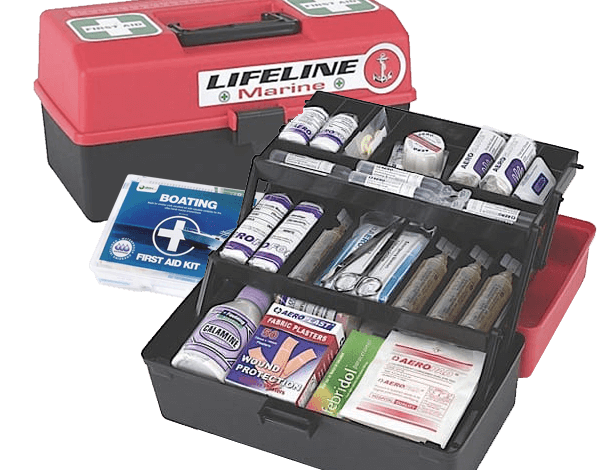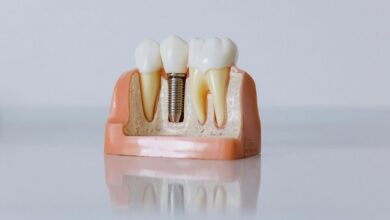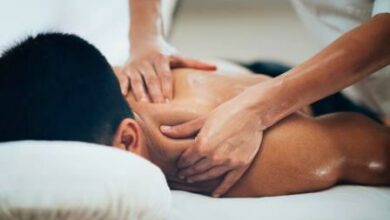Essential Components Of A Comprehensive Marine Medical Kit

Sailing could be exhilarating but risky!
Whether you are a seasoned sailor or a novice, the vastness of the ocean brings unpredictability. From minor cuts and scrapes to serious issues like stings, bites, burns and allergic reactions, the human body is prone to the perils of the sea.
Limited resources, exposure to harsh marine environments, space constraints, the potential for multiple casualties and psychological stress – there are numerous factors that can make a minor condition escalate. By acknowledging the unique challenges posed during a marine journey, one can easily navigate the risks and turn potential issues into manageable situations.
The key is to stay prepared with a well-stocked marine medical kit. In this blog, we will discuss the importance of first aid during a marine journey and the components that make for comprehensive marine first aid kits.
Let’s dive in!
Why Do You Need Marine First Aid Kits?
With risks associated with marine journeys, maritime safety is an unwavering priority. A certified marine safety kit along with the knowledge to use it makes for a crucial aspect of maritime safety. Here are a few reasons why you need a marine medical kit:
1. Immediate Response
Medical help is not easily accessible during a marine journey, thus a well-equipped first aid kit is the way to provide immediate care. An immediate response to an issue could help in preventing it from further escalation or worsening. It is beneficial in wound care, abrasions, cuts, and bites by marine creatures, and helps in preventing further infections.
Crew members can encounter emergencies like deep lacerations, rapid weak pulse, shallow breathing, cold clammy skin, or traumatic injuries due to fire, collision, or equipment malfunction. All of these can be handled with the help of marine first aid kits.
2. Remote Location
People usually travel to remote locations that have limited resources and limited access to medical help. In such conditions, a maritime first aid kid becomes crucial in providing essential care, especially in emergencies.
3. Seasickness and Common Ailments
Seasickness or motion sickness is another reason that crew members usually face during a maritime journey. A properly stocked marine medical kit can help alleviate seasickness and common ailments like dehydration, sunblock, anxiety, ear and sinus pressure, sleep disturbance, seafood poisoning, heatstroke, insect bites, or headaches.
4. Compliance Checks and Inspections
Commercial vessels, recreational boats and cruises of certain sizes are subject to routine inspections to ensure compliance with safety standards. A marine first aid kit is one of the critical components required by the authorities to pass the safety check.
According to the National Standard for Commercial Vessels, “sufficient and appropriate medical supplies must be maintained to treat likely individual injuries until professional medical treatment becomes available.”
Another regulation that monitors safety inspection is AMSA (The Australian Maritime Safety Authority) which has comprehensive guidelines to ensure the safety of all. A first aid kit is mandatory according to the rule and failing to comply with the rule will result in penalties and fines.
Compliance with AMSA Regulations – Components of A Marine Medical Kit
AMSA (The Australian Maritime Safety Authority) is an important safety regulatory body that ensures complete safety regarding maritime activities, setting safety standards, and ensuring compliance.
AMSA mandates specific categories – F, G, H, and I for commercial vessels and recreational boats for marine first aid kits. There are a few parameters that are considered to determine into which category a vessel falls. Length of voyage, number of passengers, and medical kit essentials are some important key parameters.
Let’s see what is typically included in different categories.
- Scale F: This category deals with ships going on short coastal voyages. They are mandated to keep basic supplies in marine first aid kits that can treat minor cuts, burns, sprains, and illnesses like seasickness.
- Scale G: Ships going on extended coastal voyages are put under this category. They are mandated to keep additional items along with basic supplies that can treat more serious injuries like fractures and allergic reactions.
- Scale H: This is a more advanced category that deals with ships going on offshore voyages, considering the complexity of situations. They are required to keep marine medical kits well stocked with advanced equipment for managing serious issues like trauma, burns, and respiratory emergencies.
- Scale I: It is the most advanced and sophisticated version of the previous category. Large vessels with medical personnel fall under this category. They are mandated to keep their marine medical kit well-equipped with medications, surgical instruments, and advanced life support equipment, more like a small medical clinic.
Essentials of a Comprehensive Marine Medical Kit
Contents of a Scale F Category –
- Adhesive bandages in various sizes (e.g., 1 cm x 6 cm, 5 cm x 5 cm)
- Triangular bandages
- Conforming bandages
- Sterile wound dressings (e.g., non-adherent pads, gauze pads)
- Sterile adhesive strips
- Bandage scissors
- Safety pins
- Antiseptic wipes or solution
- Paracetamol
- Ibuprofen
- Antihistamine tablets
- Seasickness medication (e.g., metoclopramide)
- Loperamide (anti-diarrheal)
- Eye drops
- Sterile burn dressings
- Burn gel
- Thermometer
- Instant cold pack
- Disposable gloves
- Tweezers
- Eye wash solution
- Saline solution
- First aid manual (Australian Standard)
- Disposable sharps container
- Biohazard specimen bag
Contents of Scale G Category –
- Sterile dressings in various sizes
- Conforming bandages (elastic and non-elastic)
- Triangular bandages
- Adhesive tape (waterproof and hypoallergenic)
- Wound irrigation solution (saline)
- Sterile wound cleansing wipes
- Sterile gloves
- Scissors and safety pins
- Non-adherent wound dressings
- Blister pads
- Burn dressings
- Paracetamol (pain reliever)
- Ibuprofen (pain reliever)
- Antihistamines (allergy relief)
- Seasickness medication (consider additional options)
- Loperamide (diarrhea medication)
- Epinephrine auto-injector (for severe allergic reactions)
- Antiseptic cream
- Instant cold packs
- Thermometer
- Stethoscope
- Blood pressure cuff
- Sphygmomanometer
- Tongue depressors
- Sterile eye pads
- Bandage shears
- Splints (various sizes)
- Adhesive splints
- Emergency blanket
- Space blanket
- First aid manual
- CPR face shield
- Disposable towels
- Biohazard specimen bags
- Sharp container
- Emergency drinking water tablets
- Hand sanitiser
- Disinfectant wipes
Contents of Scale H Category-
- Automated External Defibrillator (AED)
- Oxygen and resuscitation equipment: Bag-valve-mask (BVM) resuscitator, oxygen cylinder and regulator, and suction apparatus for clearing airways.
- Spinal immobilization devices: Cervical collars, backboards, and straps for stabilizing and preventing further injury in case of spinal trauma.
- Extensive sterile dressings: Bandages of various sizes, gauze pads, adhesive rolls, etc., for treating wounds of different severity.
- Suture materials and instruments: For closing wounds and minimizing infection risk.
- Wound irrigation solutions and cleansing wipes: For cleaning and disinfecting wounds to prevent infections.
- Burn management supplies: Burn dressings, gels, and topical pain relievers for treating and managing burns.
- Splints and slings: For stabilizing fractures, sprains, and dislocations.
- Immobilization straps and bandages: For securing splints and providing additional support.
- Pain relievers: Non-steroidal anti-inflammatory drugs (NSAIDs) and opioids for managing pain.
- Antibiotics: A broad-spectrum antibiotic for treating various bacterial infections.
- Anti-emetics: Medications to control nausea and vomiting.
- Antihistamines: For treating allergic reactions and insect bites.
- Epilepsy medications: For controlling seizures if necessary.
- Electrolytes and hydration solutions: To combat dehydration and electrolyte imbalances, especially in cases of heatstroke or diarrhea.
- Other essential medications: Medications for common ailments like seasickness, diarrhea, and asthma.
- Sterile needles and syringes: For injections and administering medications.
- Thermometer and blood pressure monitor: For monitoring vital signs.
- Stethoscope and other diagnostic tools: For basic medical assessments.
- Emergency blankets and heat packs: For maintaining body temperature in case of hypothermia or shock.
- Eyewashes and saline solution: For flushing contaminants from the eyes.
- First aid manual and reference materials: For guidance on administering care and making informed decisions.
Contents of Scale I Category-
- Antiseptics and wound care: Iodine solution, sterile dressings, bandages, gauze pads, suture materials, skin staplers, wound irrigation syringes, and topical antibiotics.
- Pain management: Analgesics (oral and injectable), anti-inflammatories, narcotics, topical and local anesthetics.
- Fluids and electrolytes: Intravenous (IV) fluids, IV sets, catheters, blood pressure cuffs, stethoscopes, syringes, and needles.
- Respiratory care: Oxygen cylinders, masks, resuscitation bags, nebulizers, airway adjuncts (endotracheal tubes, laryngeal masks).
- Cardiac care: Defibrillator, cardiac monitor, ECG electrodes, resuscitation drugs (adrenaline, atropine).
- Other essential items: Thermometers, blood glucose meters, catheters, syringes, needles, emergency blankets, resuscitation masks, sterile gloves, waste disposal containers, and sharps containers.
- Fracture management: Splints, slings, casts, traction equipment, pain management for dislocations and fractures.
- Burn care: Burn dressings, burn gels, fluids, pain management for burns.
- Eye care: Eye washes, sterile eye pads, irrigation syringes, topical anesthetics.
- Dental care: Temporary fillings, pain medication, instruments for basic dental procedures.
- Obstetric supplies: Delivery kits, forceps, sterile drapes, umbilical cord clamps, neonatal resuscitation equipment.
- Drugs: A wider range of prescription medications for various medical conditions, including antibiotics, anticonvulsants, anti-emetics, antimalarials, insulin, etc.
- Medical books and references: Emergency medicine manuals, drug formularies, and first aid guides.
- Diagnostics: Portable ultrasound machines, blood chemistry analyzers, blood glucose meters.
Conclusively, we can say that the unpredictability of the sea can bring in unexpected turns. Make sure that whichever ship you take for your maritime journey, it should be well-equipped with a marine medical kit in compliance with AMSA. This was all about the essential components of marine first aid kits, we hope you liked the blog, stay in touch for more updates!




